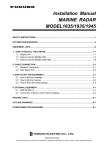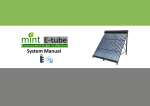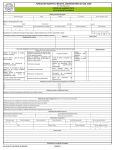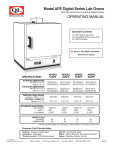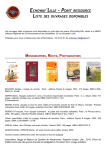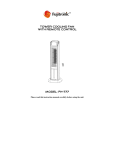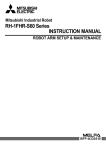Download Factory Service Manual for your model Factory Parts Manual
Transcript
DISCLAIMER We Highly Recommend that only a qualified or experienced technician with a background in Harley-Davidson® motorcycles and the American Custom aftermarket successfully complete the SMW wide tire kit installation. It is highly recommended that the following H-D® publications are available for your reference as they are referred to in the instructions. Factory Service Manual for your model Factory Parts Manual We highly recommend that the entire SMW Wide Tire Kit be installed and “mocked up” for fitment and function. After mock up is complete, SMW fender and swingarm can be removed and painted to match the tank and front fender. PARTS NOT INCLUDED ADDITIONAL PARTS REQUIRED NOT PROVIDED WITH THE SMW 300™ KIT 1 REAR WHEEL WITH 300mm TIRES, PULLEY, AND ROTOR: Any 10.5” wheel from SMW is fully compatible with the SMW wide tire kit. You may use your existing rotor and pulley in conjunction with a solid 10.5” SMW wheel. You may also consider purchasing a matching set of chrome or polished SMW wheels with rotors and a pulley. Other wheel companies may also be compatible. EXHAUST SYSTEM: Install Right Side Drive exhaust only. SMW has tested and validated fitment of exhaust systems from several manufacturers. However, Martin Brothers Exhaust Systems are highly recommended for look and function. REAR TAILLIGHT/LICENSE PLATE ASSEMBLY: We recommend taillights that will mount to the swingarm, foot peg, or derby cover. We recommend the Eddie Trotta of the Doss swingarm mount assembly. REAR BLINKERS: Stock blinkers can be used, however cosmetically Chris Products or Adjure Blinkers are recommended. SEAT: Most solo seats that fit a 13” rear fender work fine. However, only the Drag Specialties solo seat 05-905138 has been validated for fitment. STOCK BIKE DISASSEMBLY It is recommended, to compliment these instructions, to have a Harley-Davidson® service manual for your particular year model. 1. Disconnect and remove the battery. 2. Drain Fluids: Completely drain the transmission and primary drive oils need to be completely drained. Refer to H-D® Factory Service Manual. 3. Stabilize and elevate the rear wheel and make safe. Keep rear wheel off of the ground by positioning the bike on a suitable jack or bike lift. 4. Disassemble: Remove the transmission, seat, primary drive housing, clutch components, rear tire, swing arm, exhaust pipes, fender, and wiring housing by unplugging wires and removing two mounting bolts then transmission. Refer to the factory service manual. Also, remove the rear brake caliper and 2 brake line all the way up the rear master cylinder. The starter and transmission can be removed without removing oil tank via the left side of the motorcycle. Figure 5. Cutting Fender Supports: The fender struts must be removed in order for the new SMW fender to fit. Refer to Figure 2. Use a reciprocating saw or abrasive cutoff wheel to remove the supports as shown in Figure 2. With a flap wheel smooth off all sharp corners and edges. The resultant bare metal will not be visible once the fender is installed. CHECK NEWLY CUT FRAME FOR FENDER FITMENT AT THIS POINT BEFORE PROCEEDING. Additional material may need to be removed for proper fitment. 3 As an anti-corrosion measure, paint the exposed bare metal with primer and/or paint. 6. Cleaning threads on frame: To aid in the assembly process use a tap and tap cutting fluid to clean out the threads of the fender . 7. FINAL DISASSEMBLY CHECKS: With the completion of the disassembly process, the motorcycle should look like FIGURE 3 on this page. 4 Transmission: Before installing the transmission you can install a shock lowering kit (supplied). BC 49-5059 Disassemble shock per factory service manual per factory service manual. A hydraulic press will be required. Install lowering kit per provided lowering kit instructions inside kit packaging. Reinstall shocks. Shocks can be adjusted anytime after this point for proper ride height. 1. Pulley Cover: The pulley cover and actuator assembly must be removed from the transmission, and then remove pulley nut and pulley. Set the pulley cover and pulley aside. 2. Speed Sensor: Reinstall on the new provided transmission the stock speed sensor from old transmission with spacer provided in kit. This is for proper sensor to gear clearance. FIGURE4. 5 3. Starter: Install starter using the alignment dowel installed on the transmission as a guide. Use factory bolts for starter with a 5/16” -18 nut to hold starter into position. Do not over tighten, because the nut will be 6 discarded later during assembly ) FIGURE 5. 4. Transmission: Install transmission through the left side of bike, rear end first. Make sure the clutch actuator rod does not fall out. FIGURE 6 & 7. Maneuver transmission into position by first sliding back of transmission through rear frame opening of bike then move the transmission to the motor. Refer to factory service manual for torque specs. and sequence of bolting transmission to motor. 7 5. Ignition Coil: Install frame support/ignition coil to frame and transmission. Refer to factory service manual. 6. Transmission Fluid: Fill the transmission fluid with 22-24 fluid oz of gear oil. Recommended: Screaming Eagle™ 20w 50 Swing Arm: 1. Install Electronics Housing (70354-03HD) with two mounting bolts and plugging in wires. 2. Install: Install swing arm per factory service manual reusing the stock pivot shaft bolt, stock pivot bearing (must be removed from stock swingarm), stock pivot shaft spacers, and stock shock bolts with washers. Install pivot shaft bolt with washer through left side of bike with the factory spacer in place. It is recommended that you hold left side of pivot bolt so that the bottom of the head is horizontal while you torque the right side to proper torque specs. Reinstall factory shock bolts and washers per factory service manual. 3. Install provided splash guard with provided hardware *X4 (Chrome button 5/16- 18 X ¾), Flat washers, lock washers and nuts. Figure 10. 8 Primary: 1. Shifter Linkage Arm: Install forward control factory shifter linkage to transmission shifter arm. 2. Removal: Remove the 5/16” – 18 Nut on starter that was previously installed for transmission installation. Discard nut. 3. Starter Coupler: Install stock starter coupling so that the shallow side of the counter bore is facing out. FIGURE 11. 4. Wiring: Route all wiring to transmission and starter. Neutral switch harness is routed under starter assembly. 5. Inner Primary: Install inner primary per service manual. After installing inner primary, shift transmission by hand through the gears to make sure linkage will not hit the inside of the inner primary. 6. Starter: Bolt to inner primary per factory service manual. 7. Starter Jackshaft: Install starter jackshaft assembly per service manual. 8. Anchor Plate: Use (Red Loctite™) and torque anchor plate to 12-14 ft .-lb. or 16.3 – 19.0 nm. 9. Chain Tensioner Shoe: Install tensioner shoe and bolt in place loosely at this time. 10. Primary Chain & Clutch Basket: Install compensating sprocket, chain, and clutch basket. (Do not use thread sealant at this time?) Torque compensating sprocket and clutch basket nut per factory service manual. Tighten chain. 11. Primary Chain Alignment: Complete a sprocket alignment check. Refer to factory service manual. Once verification of correct alignment has been 9 verified loosen primary chain, remove compensating sprocket nut and clutch basket nut. Apply (Red Loctite™) to compensating sprocket nut and clutch basket nut and torque to factory specifications. 12. Chain Adjustment: Remove and re-install chain tensioner bolt with (Red Loctite™), adjust chain per service manual, and torque to 21-29 ft.-lbs. 13. Outer Primary: Install outer primary per service manual and fill primary with primary fluid per Factory Service Manual. Installation of Transmission Pulley: 1. Drive Pulley Nut: Install transmission pulley using (Red Loctite™) torque to 70 ft. lbs. (The step on the pulley nut must face pulley.) 2. Pulley Retainer Screws: Apply (Red Loctite™) to pulley nut retainer bolts (provided in kit), install in pulley and torque to 100 in-pounds. FIGURE 12. Frame Components: 1. Rear Brake Line: Install brake lines, fittings, and brake switch from rear master cylinder through the middle of swing arm. (Running the brake line 10 along the frame as the original was located.) FIGURE 13, 14, 15, & 16. Use a 28” flexible brake line from the master cylinder to brake light switch ‘T’. Use a 34” flexible line from brake ‘T’ to rear caliper. Routing the line through the left of the swing arm to later be placed in the ‘notch’ in the provided SMW™ splashguard. 11 2. Brake Tee: Tighten Brake Stop Switch to Brake Tee installed on transmission (Figure 16). Install stock switch wiring to brake switch. Terminal direction is not important. 3. Speedometer Re-Calibration: Install the provided speedometer recalibration box between the speed sensor harness and the speed sensor. (See Speedo Re-cal box for instructions and adjustment info.) 12 Pulley Cover: 1. Rear Belt: Install rear belt around the transmission pulley and through the swing arm. Figure 17 2. Pulley Cover: Apply (Blue Loctite™) to pulley cover bolts and then reinstall pulley cover. Torque the bolts to 200 in-lbs. (3pc 5/16-18 x 1” Bolts.) 3. Mechanical Clutch Actuator Cover: Remove the outer mechanical actuator cover with gasket from chrome pulley cover. Install stock clutch cable through chrome actuator cover. (Do not over tighten clutch cable to actuator cover) Hook cable end to ball and ramp assembly. Make sure you seat ball and ramp properly in actuator cover. FIGURE 18. Apply (blue) thread sealant to actuator cover bolts and reinstall actuator cover with gasket to chrome pulley cover. Torque to 110 inlbs. Add grease. 13 4. Clutch Adjustment: Adjust clutch and clutch cable per factory service manual. Rear Wheel: 1. Rear Wheel: Install rotor and pulley onto rear wheel. Use (red) thread sealant on rotor and pulley. (If you are using a wheel supplied from another manufacturer, a pulley spacer might be needed.) (Do not use (red) thread sealant on pulley hardware until you have checked fitament.) 25 to 30 ft. lbs. on rotor bolts and 45 ft. lbs. on pulley bolts. 2. Install Wheel: Install wheel into swingarm on the axle. Use anti-seize lubricant as a rust inhibitor and assembly aid. Only push axle partially through from right to left, if standing behind the motorcycle, leaving room to install caliper bracket. 3. Brake Caliper: Install HHI left side brake caliper on rear wheel brake rotor. (HOLD CALIPER CAREFULLY NOT TO DAMAGE WHEEL OR BRAKE ASSEMBLY DURING INSTALLATION.) 4. Brake Bracket: Install brake bracket on caliper and tighten with chrome button head 3/8 – 16x1”caliper bolts supplied in HHI caliper box. Do not use (red) thread sealant at this time. 5. Rear Wheel Axle: Put rear drive belt onto pulley. Slide rear axle completely through swingarm using axle slot fitting, star washer, adjust axle to approximate middle of axle slot using the axle adjusting screws, and tighten axle using axle bolt. Figure 19 & 20 14 SMW Rear Fender 1. Rear Fender: Install rear fender on frame. Using bolts provided, apply (blue) thread sealant (four 3/8 – 16x 11/2, four 3/8 AN washers, two 1/2 – 13x11/2, and two ½ an washers) and torque 21-31 ft-lbs. Figure 21 15 2. Engine Module: Install ECM or ignition module on rear fender. Use ¼ 20 x ¾ bolt, washers and lock nut to secure to fender. 3. Ignition Harness: Hook up ECM or ignition module to factory wiring harness per factory service manual. 4. Rear Wheel Alignment: At this time check belt alignment, caliper spacing, and make sure wheel rolls freely on axle without clearance issues. Also make sure rotor rotates freely through caliper. Adjust rear belt tension and wheel alignment with provided set screws installed in the swingarm per factory service manual. Spend quite a bit of time rotating rear wheel by hand to fully insure proper belt tracking is achieved. Failure to do this could result in motorcycle damage, serious personal injury, or death. Once fitament and alignment is checked measure the three spacing gaps on rear axle using an internal dial caliper gauge. Once accurate measurements are taken, have the three spacers (provided in kit) machined to exact size. Take into account paint or powder coat. Approximate caliper side spacers should be .64” and .78”. Approximate pulley side spacer should be 1.60”. These measurements were taken using SMW wheels. Spacer gaps might be different when using wheels from other manufacturers. Figure 22 16 5. Add Wheel Spacers: Once spacers are machined to size, remove axle and insert spacers in the correct gaps. Remove caliper bolts and caliper, add (red) thread sealant to caliper bolts and reinstall. Torque to 25 ft. lbs. 6. Disassemble for Paint or Powder Coat: Once swingarm has been painted or powder coated, reinstall as described above (refer to number 4) and tighten axle bolt to 40-45 ft. lbs. using (red) sealant. Tighten down jam nuts on axle adjustments screws and use (blue) thread sealant. Also install axle cap covers using (blue) thread sealant and tighten until snug. Final Assembly: 1. Rear Brake Line: Route brake line to rear caliper along inside of swing arm. 2. Make Sure Brake Line does not and can not come in contact with the secondary drive belt. 3. Bleed Brakes: Bleed Rear brakes per factory service manual. 4. Exhaust: Install exhaust gaskets. Install exhaust system of your choice. Take the time to make sure that the exhaust is in full contact with the gasket at the cylinder head and that the exhaust has ample clearance to all parts of the motorcycle. Refer to factory service manual on exhaust flange to cylinder head torque specifications. 5. Battery: Install the battery. 6. Seat: Install the seat of your choice using the provided seat nut kit. 17 7. CHECK ALL BOLTS AND FLUIDS BEFORE STARTING MOTORCYCLE FOR YOUR PERSONAL SAFETY AND FOR THE MECHANICAL INTEGRITY OF YOUR MOTORCYCLE! 18


















